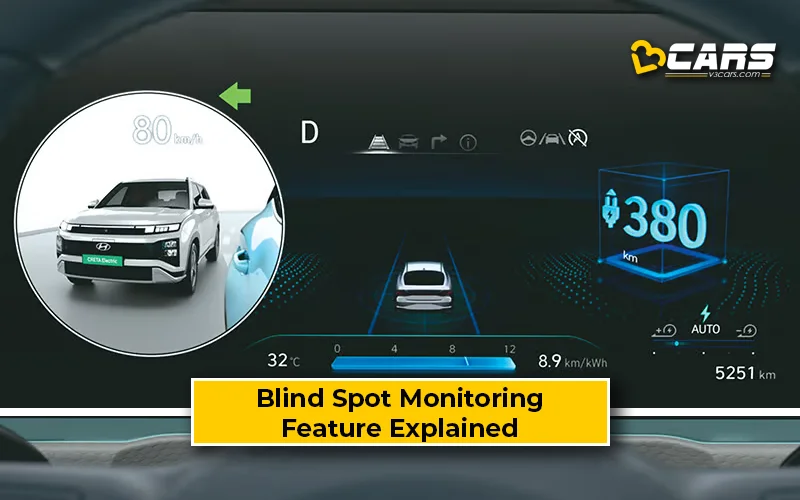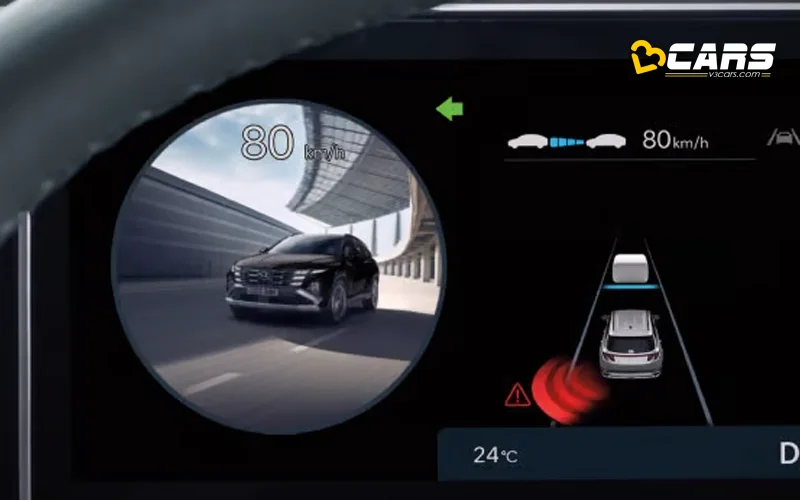Blind Spot Detection – ADAS Feature Explained
For decades, the “head check” has been a driver’s most crucial move before changing lanes. Yet, even with perfect mirror placement, a small section of the road – the blind spot – can hide a vehicle or motorcycle from view. This hidden danger is a leading cause of lane-change accidents. Fortunately, modern technology has a solution: blind spot monitoring. In this comprehensive feature explained guide, we’ll break down everything you need to know about this increasingly common car safety feature.

What Is Blind Spot Detection In Cars?
Blind spot monitoring is a safety feature that alerts a driver to the presence of other vehicles in their blind spots – the areas to the side and slightly behind the car that are not visible in the side or rearview mirrors. The system is designed to provide an extra layer of awareness, particularly on multi-lane highways or in heavy city traffic, reducing the risk of a side-swipe collision. This feature is also frequently referred to as blind spot detection or blind spot information system.
How Does Blind Spot Detection Work?
The technology behind blind spot detection is surprisingly straightforward. The system primarily uses sensors, typically radar or sensors, mounted on the rear bumper of the vehicle. These sensors constantly scan the adjacent lanes on both the left and right sides.
When a vehicle enters the designated blind spot area, the system triggers a 2-stage alert for the driver:
- Visual Alert: A warning light, usually located on or near the side mirrors, illuminates to indicate that there is a vehicle in the blind spot. Some cars like the Hyundai Creta and Honda Elevate even offer a visual feed from cameras while activating the turn indicators.
- Audible Alert: If the driver attempts to change lanes by activating the turn signal while a vehicle is detected, the system will escalate the alert to a more urgent audible warning or a vibration in the steering wheel, prompting the driver to abort the manoeuvre.
A Real-Life Example Of Blind Spot Monitoring in Action
Imagine you are driving in the middle lane of a 3-lane highway. You need to move to the left lane to prepare for an upcoming exit. You check your side mirror and see that the lane seems clear. You then activate your left turn signal, but just as you begin to turn the steering wheel, a small orange light on your left side mirror starts to blink, and a beeping sound fills the cabin. You glance again and realise a fast-moving motorcycle, previously invisible in your mirror, is coming up right beside you. The blind spot monitoring system has just prevented a potentially serious collision, allowing you to wait for the motorcycle to pass safely before changing lanes.
What Are The Pros And Cons Of Blind Spot Detection?
Here are the pros, or advantages of blind spot monitoring:
- Enhanced Safety: The most significant benefit is the reduced risk of accidents, especially in multi-lane environments.
- Reduced Driver Fatigue: On long drives, the system acts as a co-pilot, reducing the mental strain of constantly checking blind spots.
- Convenience: It is highly effective in stop-and-go city traffic, where motorcycles and scooters can easily slip into blind spots.
Here are the cons, or disadvantages of blind spot monitoring:
- Not A Replacement For Driver Awareness: The system is an aid, not a substitute for a physical head check. Over-reliance can lead to complacency.
- Potential For False Alarms: The sensors can sometimes detect stationary objects like guardrails or concrete barriers, leading to unnecessary alerts.
- Limited Functionality: The system’s effectiveness can be reduced in bad weather conditions like heavy rain or snow, which can interfere with the sensors.
Also Read: Lane Keep Assist (LKA) – ADAS Feature Explained
Can Blind Spot Detection Be Fixed From The Aftermarket?
Yes, blind spot detection can be installed from the aftermarket. Aftermarket kits, which typically include radar sensors, a control unit, and LED indicator lights, are available and can be fitted to most vehicles. While these systems offer a cost-effective way to add the feature to an older car, they are generally not as seamlessly integrated as a factory-fitted system. For the best results, it’s crucial to have the installation done by a professional technician to ensure the sensors are correctly aligned and the wiring is done safely.
Affordable Cars in India That Offer Blind Spot Detection
The good news for car buyers is that this crucial safety feature is no longer limited to the luxury segments. Here are some of the most affordable cars in India that offer a form of blind spot monitoring as part of their advanced safety packages (typically on top variants):
- Hyundai Creta
- Kia Seltos
- Tata Curvv
- Mahindra XUV 3XO
Also Read: Lane Departure Warning (LDW) – ADAS Feature Explained
Helpful Tools:
- Fuel Cost Calculator for Cars – Know your monthly fuel expense based on usage and mileage
- Car On-Road Price Calculator – Convert ex-showroom to on-road price for any city
Sell Used Car Online – Enter your car and contact details to get an instant price estimate and book a free inspection with our partner network



0 Comments